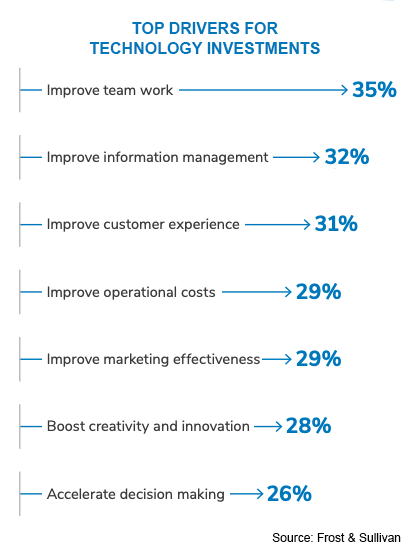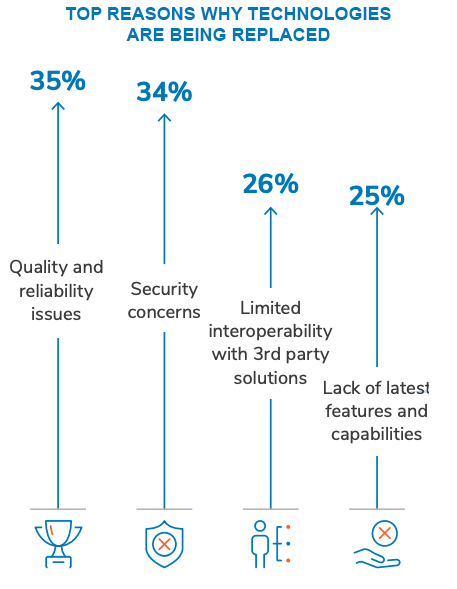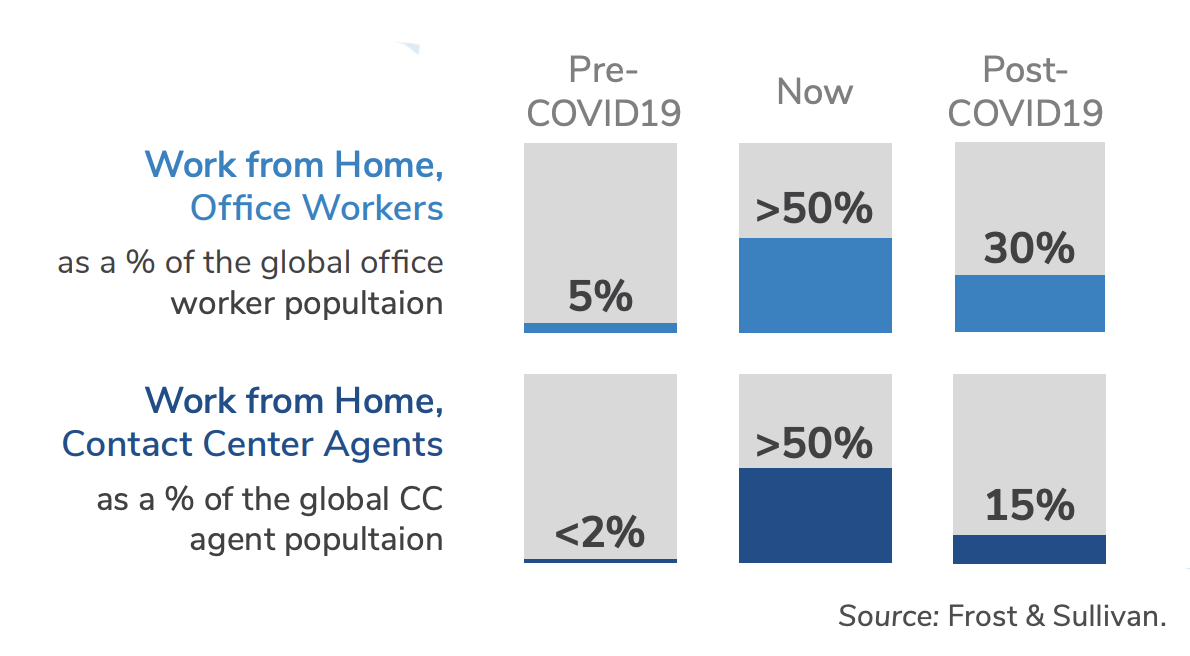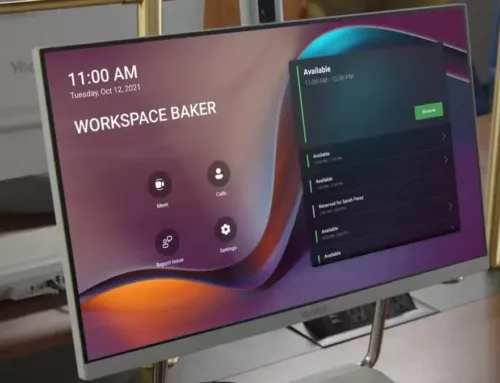Step 1 – Prioritize Cloud Conferencing Service Adoption
We have entered a new era in virtual meetings. Safety protocols amid the COVID-19 pandemic, extreme weather episodes and other disruptive events have propelled unprecedented changes in how businesses operate and how people work.
Now, more than ever, organizations of all types need to be agile and efficient. They must help employees become more engaged and productive, no matter where they work: from the office, a meeting room, at home, or on the road.
As business requirements and market demands quickly shift, leading organizations are implementing modern cloud conferencing services with integrated audio, video and content sharing capabilities to keep an unprecedented volume of distributed employees and teams fully connected.

During the global pandemic, huge numbers of organizations have rapidly adopted remote working and collaboration models. The cloud web/video meetings services market will experience a strong 24.6% compound annual growth rate in user licenses globally from 2019–2025 (source: Gartner).
Future forecasts may very well be on a significantly steeper upward trajectory. To maximize the effectiveness of their investments in modern meetings technology, enterprise leaders must ensure mission‑critical audio is of the highest quality.
Step 2 – Upgrade Your Meeting Room Technology for the New Era of Work
As organizations gradually re-open offices, decision makers are increasing efforts to drive employee productivity amid changing workplace and work style demands.
Transitions between working from the office and at home will be ongoing and fluid for many professionals. Evolving office occupancy regulations will require entire teams and departments of employees to rotate working from offices and their homes. Many employee roles will transition to full-time remote work, and greater awareness of employee well-being and work/life balance needs will create more flexible work opportunities.

The expected proliferation of distributed work is among the top factors causing organizations to re-think their meeting rooms.
The new era of work will be powered by anywhere connectivity and anytime collaboration that enables agile teams and processes. Yet, 95% of today’s meeting rooms are equipped with only minimal technology to support information sharing, such as a basic telephone and a flat panel display.

The collaborative organization of the future will require meeting rooms equipped with advanced AV devices that complement the modern, robust cloud conferencing services organizations have invested in and that professionals expect to use to be successful, no matter where work is conducted.
Step 3 – Improve Collaboration, Instill Confidence and Boost Productivity with Seamless Audio
The traditional, monolithic deployment and use of conferencing technology is obsolete. The world has shifted to flexible cloud-based deployment and consumption models with richer functionality that addresses a variety of use cases. As a result of strong growth in cloud services adoption, today’s professionals have a broad range of communications apps and modalities to choose from, no matter where they work.
However, it is a fact that no meeting can take place without audio. Audio is the foundation of any meeting, but not just any audio. It must be seamless audio that is natural, high-quality, reliable and easy to use. More natural experiences require high intelligibility in meeting rooms for all participants. Remote participants cannot be relegated to second class citizens because of the technology that is deployed—they need to hear and be heard within the conversation.

Statistics show that knowledge workers spend an average of 17 hours each month in meetings (Source: Sharp). It does not appear this will change anytime soon, particularly in light of the growth in distributed employees and teams that must stay connected.
- Meeting length has increased 10% in the last 15 years. (Source: Bain & Co.)
- Meetings now average 31 to 60 minutes. (Source: Attentiv)
- Meetings average 9 participants. (Source: Attentiv)
- Participants say 33% of meeting time is unproductive. (Source: Attentiv)
- Meetings are unproductive and inefficient, say 70% of senior managers. (Source: Harvard Business Review)
Because people spend so much time in meetings it is imperative to ensure that it is time well spent. High quality audio is essential to drive inefficiencies out of meetings. Specifically, seamless high quality audio in meeting rooms: filters out background noise to enhance focus; decreases errors due to miscommunication; reduces the need to repeat information; lessens participant fatigue and frustration; integrates remote participants fully into discussions; and shortens meeting length, while reducing costs.
High quality, reliable and easy to use audio solutions instill confidence in meeting hosts and guest presenters. This encourages full use of conferencing features (e.g., audio, video, screen share, host controls, recording, chat and more), which drive more interactive and professionally conducted sessions
Step 4 – Drive Meeting Room Effectiveness with Best-In-Class Audio
In attempts to unlock rich cloud conferencing services functionality, many existing and new meeting rooms are being equipped with the ad hoc purchase and placement of generic speakers, microphones and other audio equipment. This approach inconsistently delivers “good enough” audio performance that must be avoided.
Specific spaces and use cases require thoughtful design to produce the best outcomes. Consistent high-performance audio is achieved by thoughtful planning and selection of solutions and systems—not ad-hoc products and installation. Audio devices installed in ceilings, walls and tables, and placed on tabletops must work together as systems, from configuration through installation, use, management and monitoring.
Successfully driving user adoption requires getting it right.

Full consideration for the physical environment and how it will be used allows IT and facilities teams to develop the specifications needed to identify the best fit audio systems and solutions for each room. Further, audio systems and solutions must be easily upgradable for compatibility with new technology and various brands.
Step 5 – Focus on Ownership, Experience & Standardization
Technology buyers and investment influencers will need to perform due diligence to identify the best solution for their specific needs. The long list of options available today can be quickly shortened by focusing on the following attributes.
About the Author:
Ultimate Technologies Group is the global expert in virtual communication and collaboration technology. When it comes to high-end Audio Visual technology solutions, we are trusted by some of the most respected brands:
Commercial AV News & Thought Leadership:

2022 RedDot Winner – Yealink’s MeetingBoard 65

Sound Masking vs. Sound Absorption: Improving Conference Room Acoustics

The Current State of Hybrid Work May 2022




